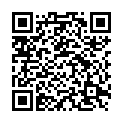|
|
|
| Module code: E2609 |
|
|
2V+1P (3 hours per week) |
|
4 |
| Semester: 6 |
| Mandatory course: yes |
Language of instruction:
German |
Assessment:
Oral examination (50%), project work (50%)
[updated 08.01.2020]
|
E2609 (P211-0071, P211-0072) Electrical Engineering and Information Technology, Bachelor, ASPO 01.10.2018
, semester 6, mandatory course, technical
|
45 class hours (= 33.75 clock hours) over a 15-week period.
The total student study time is 120 hours (equivalent to 4 ECTS credits).
There are therefore 86.25 hours available for class preparation and follow-up work and exam preparation.
|
Recommended prerequisites (modules):
None.
|
Recommended as prerequisite for:
|
Module coordinator:
Prof. Dr. Martin Buchholz |
Lecturer: Prof. Dr. Martin Buchholz
[updated 10.09.2018]
|
Learning outcomes:
After successfully completing this course, students will have the basic knowledge necessary for understanding digital transmission systems. - They will be able to analyze the quality of digital transmission systems using eye diagrams and bit error rates. - Students will be able to simulate a complete transmitting and receiving system with Matlab/Simulink and other EDA tools. - They will be able to implement the required digital algorithms for carrier and clock recovery, automatic gain control, filtering, pulse shaping, equalization, as well as IQ modulation and demodulation. - They will be able to specify selection criteria for an appropriate receiver architecture and modulation procedure. - Students will be able to estimate the effort required for multi-rate signal processing (decimation and interpolation).
[updated 08.01.2020]
|
Module content:
1. Introduction 2. Digital baseband transmission - basics, line coding, pulse shape filtering, eye diagram, bit error rate, M-ary PAM 3. Communication channels - AWGN channel, wired channels, wireless channels, mobile channels 4. Digital bandpass transmission - IQ modulation, complex baseband representation (equivalent low-pass signals), constellation diagram, higher-order modulation methods 5. Receiver architectures - analog front end heterodyne receiver, homodyne receiver, Low IF receiver, direct-conversion receiver, up down receiver, direct sampling receiver 6. Demodulation - digital front end coherent and non-coherent detection, matched filtering, channel selection, mirror frequency suppression, clock and carrier synchronization, AGC, equalizer 7. Multirate signal processing - interpolation, decimation 8. Wideband transmission techniques - spread spectrum, CDMA, OFDM, UWB 9. Simulation of telecommunication systems in Matlab and Simulink
[updated 08.01.2020]
|
Teaching methods/Media:
Projector, lecture notes, Matlab, EDA tools, IQ lab (laboratory test environment)
[updated 08.01.2020]
|
Recommended or required reading:
Haykin, Simon: Digital Communications, John Wiley & Sons Hoffmann, Josef; Quint, Franz: Signalverarbeitung mit Matlab und Simulink: Anwendungsorientierte Simulationen, Oldenbourg, 2007 Oppenheim, Alan V.; Schafer, Ronald W.; Buck, John R.: Zeitdiskrete Signalverarbeitung, Oldenbourg, (latest edition) Proakis, John G., Salehi, Masoud: Grundlagen der Kommunikationstechnik, Pearson, 2004, 2. Aufl. Proakis, John G.: Digital Communications, (latest edition) Roppel, Carsten: Grundlagen der digitalen Kommunikationstechnik, Hanser, 2006 van Trees, Harry L.: Detection, Estimation and Modulation, John Wiley
[updated 08.01.2020]
|


